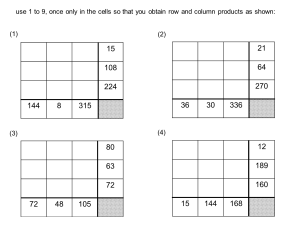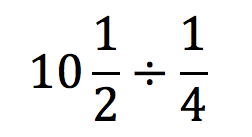My instinct is, “I know it when I see it”.
I want to move beyond that. My school loves to talk about “basic skills”. Basic skills are usually interpreted as rational number operations — decimals, fractions, positives and negatives. Then these are tested using numbers requiring several steps of calculation. But, in Algebra, lots of those basic skills become less important. Students aren’t often operating with decimals and fractions, and doing multi-digit whole number operations. When they are, they often have a calculator — as they should, to minimize the working memory load as they struggle with abstract concepts.
So I’m skeptical about the value of reteaching basic skills. I have students who struggle with simple fraction operations. But they’ve learned fraction addition several times before my class. What do I know that will allow me to teach them better, so they suddenly learn it and remember it — despite the fact that I don’t have as much time, they won’t get as much practice, and won’t see it on a regular basis as they did the first few times around?
So this is an attempt to create something better. I’m not sure I have a great definition for number sense, but one big part of it is a variety of strategies to solve simple problems based on number relationships. These relationships are the building blocks of Algebra — students don’t need to add mixed numbers with unlike denominators, they need to understand the relationship between multiplication, division, and the fraction bar. Students don’t need to divide 1963 by 21, they need to see the power of the commutative property of addition. These are half-formed ideas, but they start to get deeper than “I know it when I see it”.
So here’s a crazy idea. I broke number sense down into three categories — whole numbers, rational numbers, and ratios & proportions. Then I built an assessment. Each item was a simple calculation, comparison, or estimation. Each could easily be solved using familiar algorithms. But, each could also be solved, in some cases much more easily, without an algorithm. I’m curious: first, how many questions students will get right (I teach 8th grade, and everything here falls in 6th grade or earlier, I believe). Second, how many questions students will solve using strategies that show an understanding of number relationships, not just algorithms. This is imperfect (for instance, I realized the last question is vague). But I gave it to two of my best students today, and I was fascinated by some of their work. Here are two students’ answers.
What does this work show about these students’ number sense? How can it be useful? I’m not sure. I love looking at this stuff, but these two students both got everything or almost everything right. I’m not sure this is so different from the basic skills I want to push away from — but it worries me a bit that these students regrouped to subtract 1001 – 993. I was worried that one used long division to find a decimal approximation for 3/7 to confirm that it is smaller than 1/2. Should I be concerned? Is it possible those are “false negatives” — is the first student showing work because she thinks she should, or because she needs to?
So many questions. I’m going to give this to a few more students and adults over the next few days, and see what I can learn.
[If you’re interested in a soft copy of the current version of the assessment, it’s here]






















